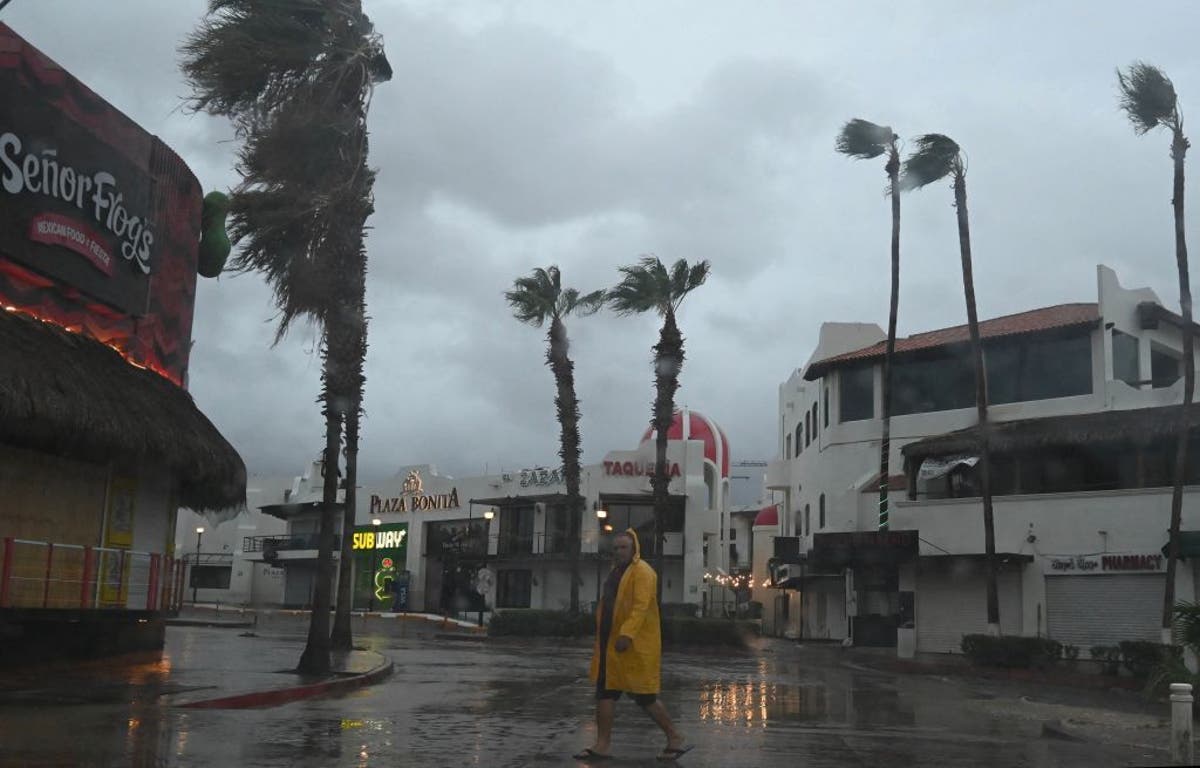This website uses cookies so that we can provide you with the best user experience possible. Cookie information is stored in your browser and performs functions such as recognising you when you return to our website and helping our team to understand which sections of the website you find most interesting and useful.

Hurricane Hilary continued its journey towards the Baja peninsula and Southern California on Saturday, as officials warned that the storm could bring unprecedented rain and flooding to the normally arid Southwest.
"Make no mistake," Nancy Ward, director of the California Governor’s Office of Emergency Services, said on Saturday in a news conference. "This is a very, very dangerous and significant storm."
"There will be power outages across Southern California," she added.
The heart of the storm, which began Wednesday in the waters off Manzanillo, Mexico, was 285 miles frmo Punta Eugenia, Mexico, and about 640 miles south-southeast of San Diego, California, as of Saturday afternoon.
The hurricane, which weakend to a Category 2 storm on Saturday, is moving north-northwest at 17mph, and sustaining maximum winds of 110mph, according to the National Hurircane Center (NHC), just shy of the windspeeds necessary for a storm to be considered a “major hurricane.”
“Heavy rainfall is expected across the Southwestern United States, peaking late tonight through Sunday night. Rainfall amounts of 3 to 6 inches, with isolated amounts of 10 inches, are expected across portions of southern California and southern Nevada,” the NHC wrote in a Saturday afternoon forecast. “Dangerous to catastrophic flooding is expected.”
Officials said they were particularly concerned about desert regions in California and the Southwest, where the deluge will likely begin in full force tomorrow. The heavy rains could cause flash flooding.
A man walks along a street in Cabo San Lucas, Baja California State, Mexico, as rain and gusts of wind of Hurricane Hilary reach the area
(AFP via Getty Images)
"We’re keeping a very close eye on our desert regions east of San Diego and Los Angeles," Brian Ferguson, deputy director of the California Office of Emergency Services, said on Monday, warning that "some parts of those areas may receive double their yearly amount of water in just a single day."
Across the region, preparations began for the historic storm, which prompted Southern California’s first ever tropical storm warning.
The Mexican army mobilised troops in anticipation of heavy infrastructure damage, The New York Times reports.
Meanwhile, in the US, cities through Nevada and California prepared for extensive precipitation.
Las Vegas handed out sand bags to residents and businesses, while California mobilised the state National Guard.
In cities with large unhoused populations like Los Angeles, outreach teams sought to evacuate homeless encampments in the path of potential flooding.
In Southern California’s San Bernardino County, the communities of Oak Glen, Forest Falls, Mountain Home Village, Angelus Oaks, and NE Yucaipa were ordered to evacuate by the sheriff’s office.
Sports leagues in the US like Major League Baseball and Major League Soccer rescheduled games in Southern California ahead of the storm’s arrival.
Such weather events are exceedingly rare in this portion of the country.
The last time a major tropical storm hit touched down in Southern California was in 1939, where homes were washed away and 48 people were killed.
The climate crisis is making major hurricanes more damaging by increasing the temperature of the ocean and raising sea levels.
Hotter seas fuel hurricane growth, while rising oceans can eliminate natural storm defences like wetlands and make coastal cities more vulnerable.



 Africana55 Radio
Africana55 Radio 
